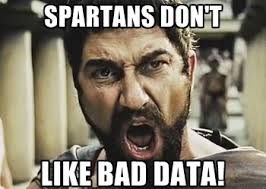Waiting weeks or months for proper analysis of data is a problem for any business. In that time, trends may have come and gone, sales lost, or customers overlooked. Keeping up with the flood of data means IT departments have been overwhelmed with requests and there has been no room to take a breath. However, for businesses involved in healthcare – this is quite literally a matter of life and death.
 Many factors have helped to make the data challenges even more severe for health companies. The Affordable Care Act has meant millions more Americans are getting health insurance, and new standards for global health initiatives have transformed how wellness is maintained. All this makes it more important than ever to find new, faster ways of accessing and processing the tidal wave of data.
Many factors have helped to make the data challenges even more severe for health companies. The Affordable Care Act has meant millions more Americans are getting health insurance, and new standards for global health initiatives have transformed how wellness is maintained. All this makes it more important than ever to find new, faster ways of accessing and processing the tidal wave of data.
Given these challenges, writes Andy Dé for Beckers Hospital Review, the recent innovations in self-service have been a real boon to the medical professions. Healthcare workers can now look at the data they need immediately, without waiting for a slow-moving report.
Visualization has been key to this. Doctors, nurses and clinicians know medicine, not data science. By providing rich and detailed visuals, programs have allowed ordinary people to analyze data themselves. For example, an initiative called Patient First brought together data from varied sources that allowed doctors to see pertinent data in a timely fashion. This access led to fewer readmissions for heart failure and heart attacks. This easy visualization of data in fact led to $2 million in savings.
Vast improvements are being made in terms of speed as well. The Big Data involved means that doctors can access real-time data from 30,000 procedures a year at the Texas Institute for Robotic Surgery. Any factor can quickly be isolated and analyzed to find positive or negative correlations in a patient’s health, allowing for much more efficient and successful patient care.
The old ways of processing data are over. This is especially true in the world of medicine. Embracing fast, smart tools that provide healthcare professionals with compelling and sharp visualizations makes it easy to make empirically sound judgments – based on the latest data available. These changes will invariably lead to a better and extended life for patients everywhere as doctors and nurses can adjust their care with ease. This revolution will lead to better decision making and better health for everyone.
Big Data and related technologies – from data warehousing to analytics and business intelligence (BI) – are transforming the business world. Big Data is not simply big: Gartner defines it as “high-volume, high-velocity and high-variety information assets.” Managing these assets to generate the fourth “V” – value – is a challenge. Many excellent solutions are on the market, but they must be matched to specific needs. At GRT Corporation our focus is on providing value to the business customer.
The Breaches We Don’t Know About
Stories of major data breaches continue to roll in. One victim announced during the spring was hard drive maker LaCie...



